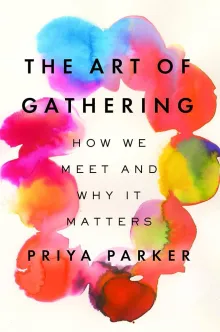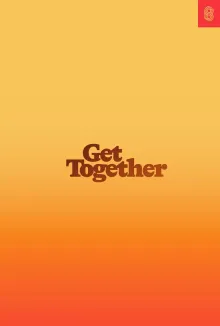Table of Contents
Table of Contents
People who currently put on events and gather people together, or people who want to start doing so.
I have been inadvertenly gathering people and putting on community events for about fifteen years. I say “inadvertently” because I’ve never sat down and thought “I want to be a community organiser.” What happens is I have a craving for certain kinds of experiences.
I think “wouldn’t it be great if I knew people also designing interfaces for language models”, or “I wish I could explore web animation with people also trying to learn it”, or “Jesus, this Bruno Latour paper is wild, who can I talk to about this??”
Then I go looking for local events and social spaces that mights satisfy those cravings. And I usually don’t find them. Either because they don’t exist, or because I’m bad at Googling and most communities don’t loudly advertise themselves.
If the craving is strong enough, and I don’t think I’m the only human on earth interested in this topic, I create an event. That event is sometimes a one-off, but sometimes it morphs into an ongoing thing that eventually becomes a living community.
In the past I’ve hosted design evenings, run visual storytelling courses, co-hosted a comic-making group, gathered a reading group for LLM designers, put on InterIntellect salons on cyborgism and rituals, organised coffee mornings for PKM nerds , setup Silent Synchronous Reading Sessions Silent Synchronous Reading Sessions
Notes on how to run silent meetings and reading sessions , co-organised an early AI x UX event in San Fransisco, run a writing club for mimicking other writers The Echo & Narcissus Writing Club
A Hyperlink Academy writing club where we mimic the work of others , and plenty of one-off events in between.
I’ve also been a participant in countless meetups, conferences, unconferences, hackathons, designathons, and retreats organised by people who are much better at this than I am, and paid close attention to their tactics.
At the moment I’m focused on running the London Future of Coding meetup, helping out with Through a Glass Darkly – a London reading group of philosophy, history, and social science nerds, and putting on smaller dinner parties at home.
Over the years I’ve learned to reign in my impulse to start new communities and groups. Or at least be wary of it in a way I wasn’t a decade ago.
The Mountain of Crap
As an organiser, you have to deal with a mountain of crap. If someone disruptive or narcissistic shows up and hogs all the time and space, you’re in charge of dealing with them. You have to be kind to people who have no boundaries, and think you owe them the world because they deigned to sign up for your event. You have to encourage and cajole the non-crazy people to share their thoughts and open up to each other. You have to design activities that faciliatate discussion and create space for everyone. People will get hungry and thirsty, and you have to find a way to feed and water them. You sometimes have to pay for it, or convince someone else to pay for it. You have to stay until the end and clean up everyone else’s rubbish. You have to field emails from a dozen people who failed to read the event description asking about the time, location, venue ammenities, schedule, food, and predicted weather for it.
Your challenge is to setup enough systems and structures to shrink this mountain of crap to an acceptable level. My organising impulses are reasonably selfish, so if I’m too busy dealing with unpleasant people, logistics, and literal rubbish to enjoy myself at an event, that’s probably the end of that community.
Luckily, I’ve found a set of structures that help make events low-stress and high-payoff for me. Which is good for everyone, because then I’m not a grump and I’m extremely happy to be the community’s steward. I then have more energy to help others enjoy the event, make gatherings more frequent, and be a nice person. If I’ve ever failed to be a nice person to you at one of my events, I sincerely apologise. I was probably dealing with a mountain of crap.
Some of the crap can be solved with software like WhatsApp for group communication, Luma for announcing events, emails, and registrations, Airtable for managing speaker sign-ups, and Deliveroo for pre-scheduling food/drink/pizza deliveries.
I think the more interesting structures are the social-shaped ones that facilitate interesting interactions, draw out ideas, help people talk to one another, and spread the burden of co-ordinating many people in one space.
Seven Minute Demos
People do demos of something they’ve built, or give a lightning talk on whatever topic they like. The demo/talk just has be less than 7 minutes long. There’s no minimum time limit. People can talk for 1 minute, 3 minutes, or take the whole 7.
7 minutes isn’t enough time to waffle, or make your audience bored. You have to get to the point immediately. If you’re demo-ing something, you can’t talk about it for ages first, because you don’t have time to. You have to jump into showing us.
This is what I do for my Future of Coding meetup and it works perfectly. The Future of Coding is a community interested in making programming more accessible, exploratory, and humane for more people. So most of what people want to see is cool, weird experiments in programming systems and interfaces. The short time format allows us to fit a dozen demos into every event, rather than only have a handful of speakers.
The time limit also lowers the barrier to entry and makes it less intimidating for people to sign up and speak. You don’t have to prepare a long song and dance, or show something elaborate. Simple, short, punchy demos shine here.
Anyone can sign up to demo. This works on a first-come, first-serve basis, and these spots tend to fill up quickly. I use an Airtable form for this, which feeds into a spreadsheet I can easily review before the event.
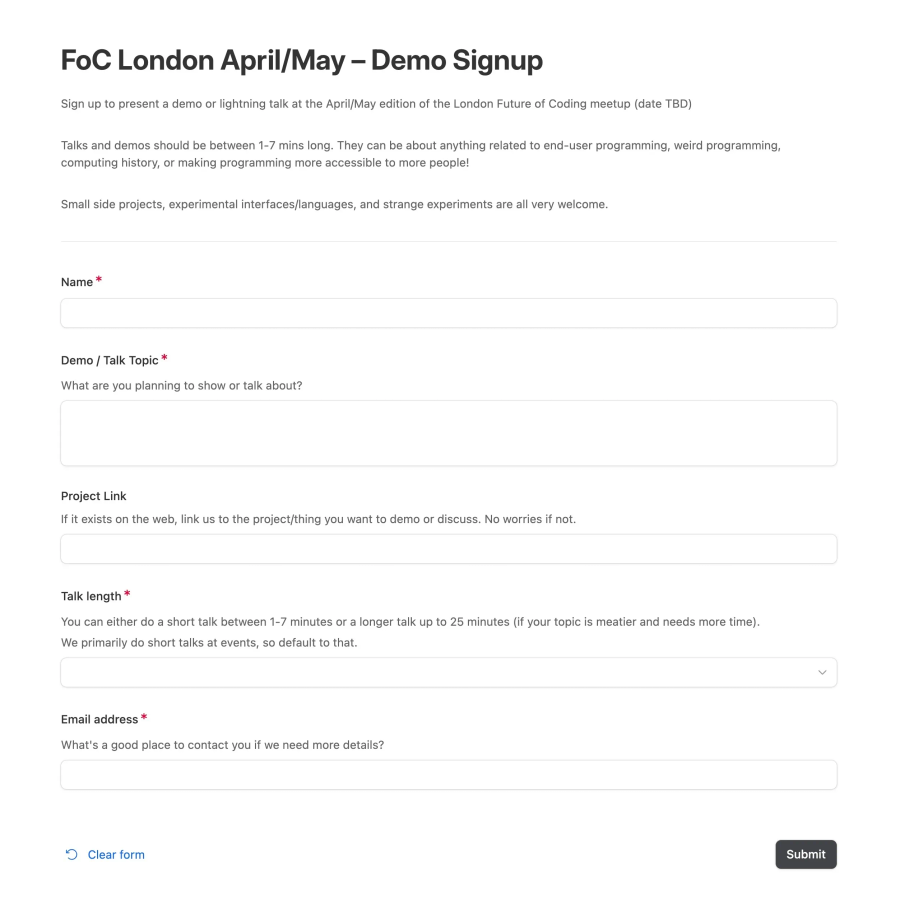

I very lightly filter demos for quality and relevance. People submit their topics ahead of time. If someone is clearly doing product promotion for their non-programming-related start-up, it’s a no. But otherwise, weird and unexpected topics are very welcome.
Ad-hoc, Rotating Hosts
When you have a smaller group (let’s say under 20), you can easily have rotating hosts who volunteer on an ad-hoc basis.
We do this in Through a Glass Darkly – an informal reading club of sorts run by my friend Bryan Kam . We have a WhatsApp group where anyone can suggest a reading they want to discuss. If other people are interested, they reply or add an emoji reaction. The proposer is now the de-facto host for a dicussion on this reading at the next event. Here’s some genuine examples of how easy this is:
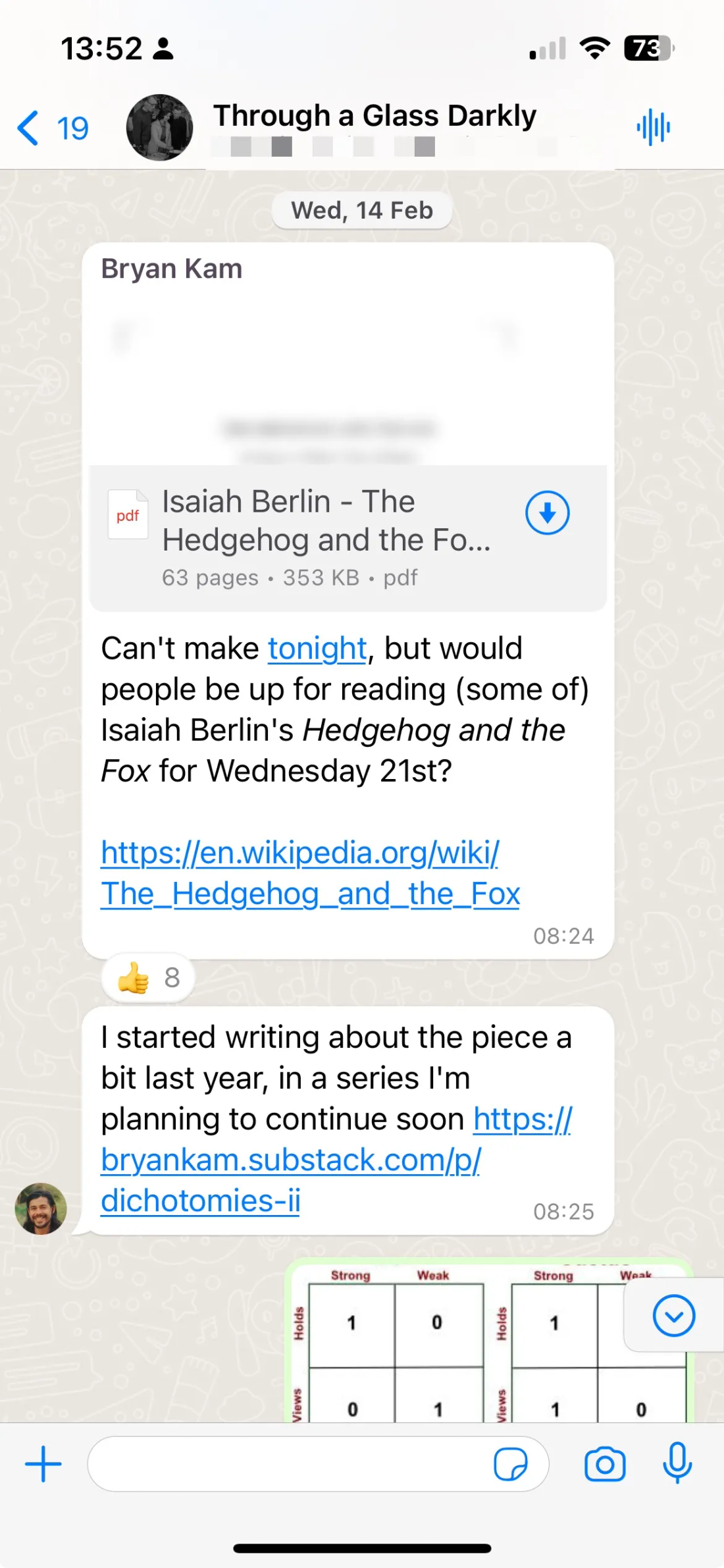
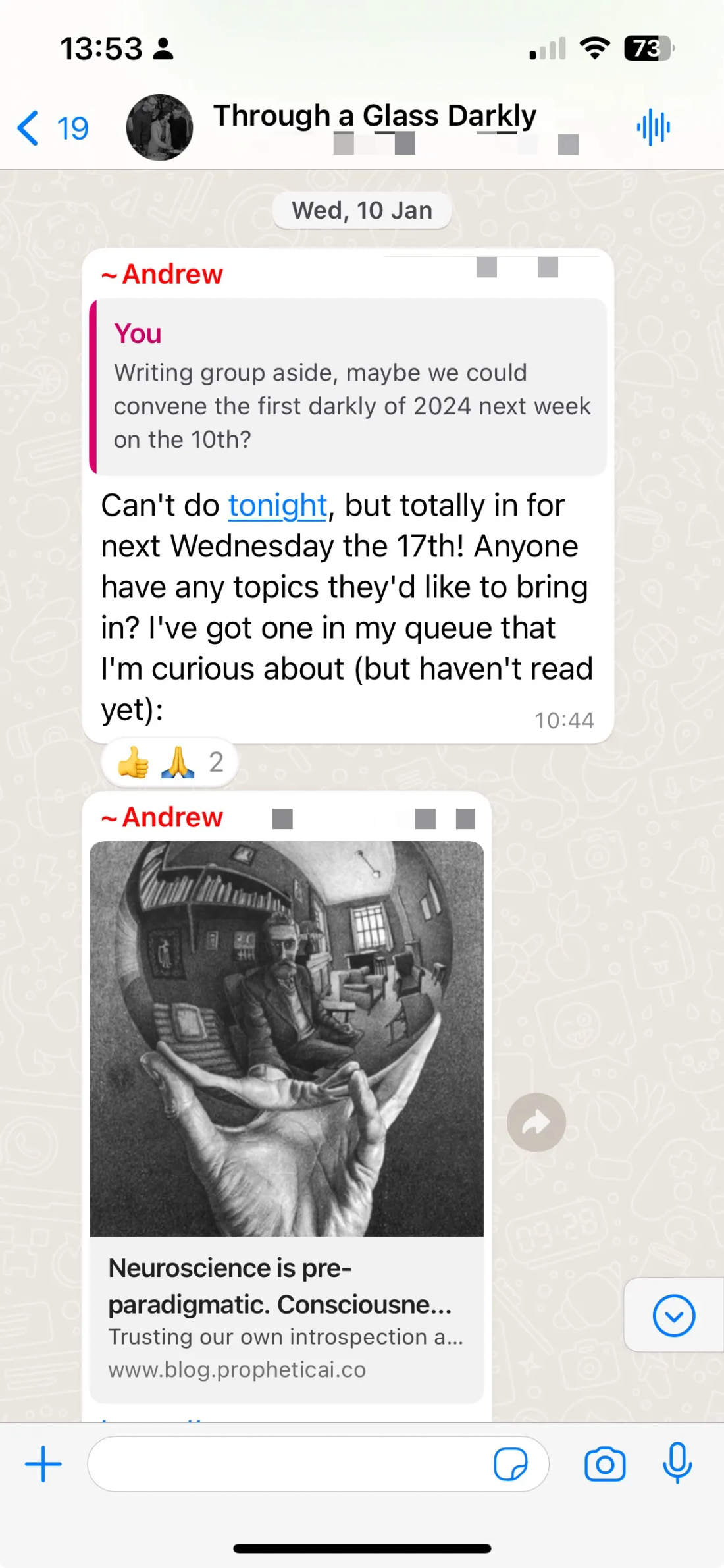
Some of the logistics are pre-solved in this group, which makes things a lot easier. We always meet at the same time and place. Participants just have to show up having done (most) of the reading.
On weeks where no one suggests a reading, or not enough people are free, the group doesn’t meet. It’s a very flexible system that adjusts to when people are more or less busy.
This turns the group into a much more democratically run endeavour, and Bryan doesn’t have to carry the burden of selecting every reading and running the discussion. You also get more diversity in what texts people want to read.
The Unconference Wall
This one is pretty well-known, but still a favourite. It comes from Open Space Technology If you’re sincerely interested in organising events or getting better at doing it, look into Open Space Technology. This guide is gold. and is the default format for unconferences .
You gather people with a common set of interests, but no specific agenda of what to talk about. Everyone writes topics they want to discuss on post-it notes. You put these on a wall for everyone to read.
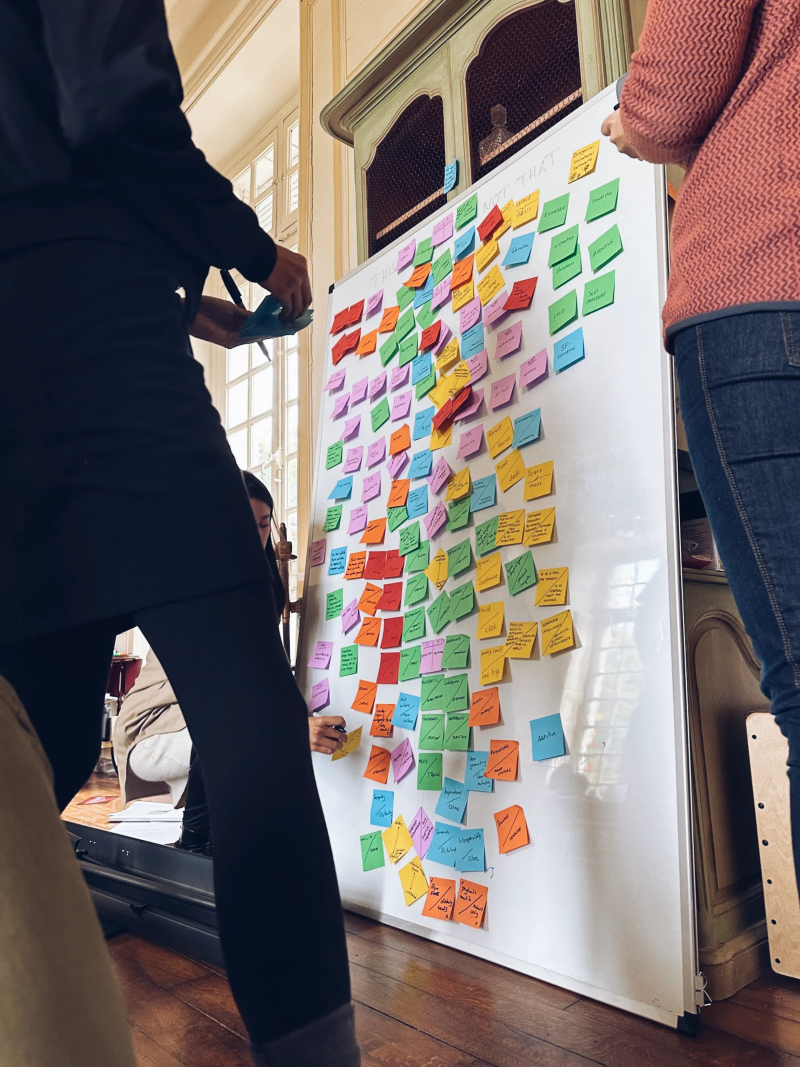
Everyone then silently votes on which ones they also want to discuss. Usually by adding small sticker dots to the corner of the post-its (also known as Dotmocracy ). The topics with the most dots will become sessions for the event.
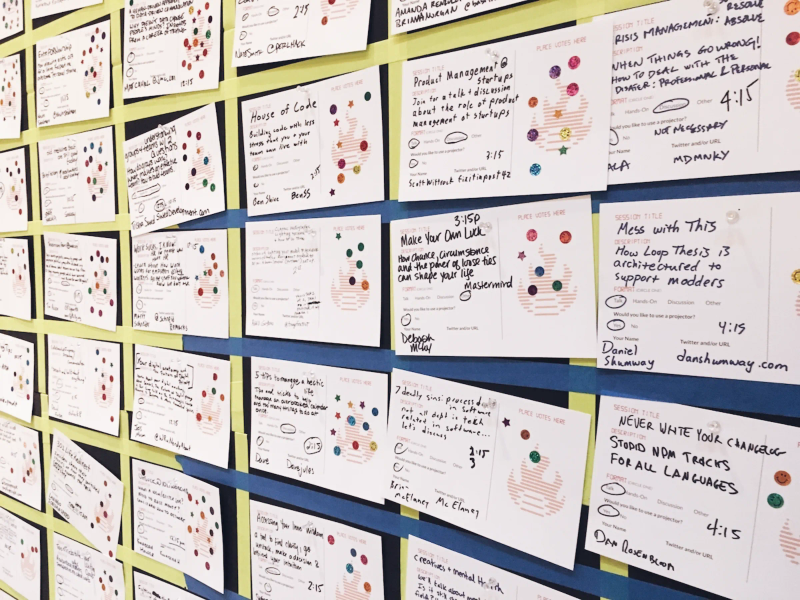
You do need some amount of space for the next bit – ideally separate rooms, or divided areas of one large room. The organisers now need to create a schedule grid. You put time slots along one side, and locations along another. You take the most popular topics and slot them into a time and place. E.g. 9-10am in Room A.
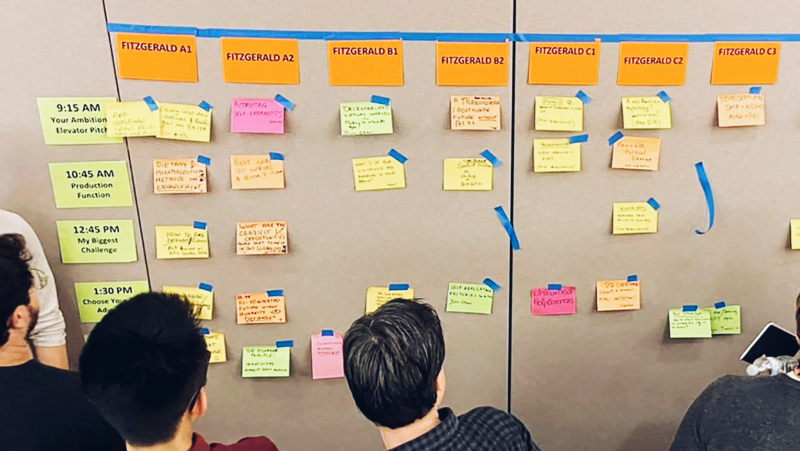
You now have a full schedule for your unconference. The people who proposed the topic (e.g. wrote the original post-it) are usually in charge of running their own session, but can negoitate co-running it with other people, or handing off facilitation entirely. It’s up to them and everyone who voted for the session.
It helps if your participants know about this format ahead of time. That way they can think of topics to suggest, and plan discussion questions or activites if those topics are picked. But I’ve also seen people completely wing it with no pre-planning, and the sessions turn out great.
Fishbowl
The fishbowl is also from unconference culture. When it works, it’s like a beautiful dance more than a discussion.
It’s used to host a discussion with a larger number of people (let’s say more than twenty). You arrange everyone’s chairs around the outside of a room in a large circle, then place 6 chairs in the center. This number is debateable, but 6 generally works. One for the moderator, 4 for active participants, and 1 left empty. This middle section is the fishbowl.
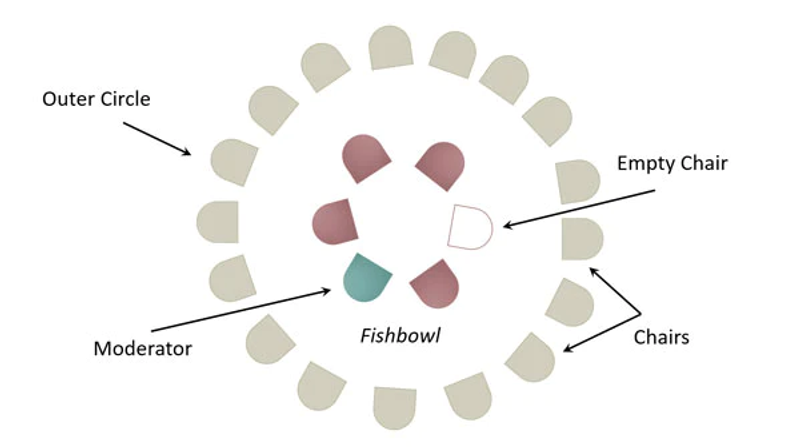
The rules are simple; you can only talk if you’re sitting in the fishbowl. There’s a moderator who stays in the fishbowl the whole time. They should have some questions ready to start the discussion and keep the flow going. They can also summarise points and reflect ideas back to the group.
Anyone can join the fishbowl at any time. But as soon as someone joins, someone else has to leave. There is always one chair left empty, as an invitation for someone new to join.
This dynamic forces everyone in the room to become attuned to the body language and behavior of everyone else. Who looks like they want to join the fishbowl next? Who looks like they want to leave the fishbowl? Who hasn’t been in it yet? Who’s taking up too much space and overstaying their welcome in the fishbowl?
It’s brilliant for regulating groups where some people love the sound of their own voice. You become hyper-aware of how much time and space you’re personally taking up when you’re in the center. The majority of people default to succintly sharing their thoughts and then ceding the floor to others.
Gatekeeping
This is slightly controvertial, but you should sometimes channel Mean Girls and be selective about who you invite to events. You need to do some gatekeeping.
Gatekeeping gets a bad rap as being exclusive and unfriendly. It can be if you do it wrong. I’m certainly not suggesting you plan an exciting event, loudly yell about it on Twitter, and then go around telling most people they’re not invited. Have a little discretion here. Only people invited to the event should know it exists at all.
Why Gatekeep though? Because events are usually better when the people: a) have high shared context on a particular topic or interest, and b) are genuinely nice, kind, social people who will add to the experience and not detract from it. This is sadly not everyone, much as I wish it were. Everyone is more likely to have a good time in good company.
The best events I’ve been to were ones where the host hand-picked everyone. For example, one event only included people who had demonstrated significant dedication to a particular community, and were doing serious work in it. Everyone came in with a lot of common background knowledge, which allowed us to jump into discussions at a deeper level. When you’ve all read the same books, know the same people, and reference the same historical touchpoints, debates become much meatier. It’s probably what academia is like, but less soul-crushing and zero-sum.
Think about it as positive exclusion. Only inviting people who are deeply into X will give them stronger connections to one another, and they’ll have plenty talk about. Someone who doesn’t care about X wouldn’t want to come anyway.
This is a total tangent, but if you ever needed another reason to learn in public by digital gardening A Brief History & Ethos of the Digital Garden
A newly revived philosophy for publishing personal knowledge on the web or podcasting or streaming or whathaveyou, add on that people will assume you’re more competent than you are. This will get you invites to very cool exclusive events filled with high-achieving, interesting people, even though you have no right to be there. A+ side benefit.
Start Small and Simple
Okay, this is less of a structure and more of a principle. Every community or event I’ve run started as small and simple as possible, with as few people as possible.
My Future of Coding meetup started as a handful of people getting a casual drink in a pub, and is now up to 80 people and a dozen presenters each time. Very much by demand, and with almost no promotional effort on my part. I think the biggest complaint people might have about this community is I’m not very good about loudly announcing it’s existence or new scheduled events for it. Sorry about that. For the record, you should subscribe to [this calendar]]( https://lu.ma/foclondon ) to be notified of new events.
I try not to add complexity or overhead if I can help it. I don’t promise people it’s going to be the best event of the season, or go above and beyond to make it exceptional. In fact, I do as little as possible. I pick a time, a location, a set of people, and a topic / intention / reading for the group, and almost nothing else.
Another event organiser once asked me how they could get more people to come to their stuff. This question confused me because I’m often trying to get fewer people to come to my events. Not because I don’t like people, but people and problems scale linearly. It is more complex to organise more people. It is harder to find venues, it is harder to coordinate them, and it is more likely one of your participants will be poorly attuned to social norms and behaviours.
My ideal community size is something like 8-12 people. Enough that if half of you are busy or sick one week, the rest can still hold a lively event.
Unsolved Problems
Here are some gathering problems I still haven’t solved. Some feel like they’re one good app away from dissappearing. Others require enourmous social infrastructure shifts, which I won’t be holding my breath for.
1. Finding the optimal meeting spot
By this I mean a location that is roughly equidistant from each person’s home, so everyone’s travel time is as short and convenient as possible.
Mercifully, this isn’t too hard in London. Our public transport system is based around a few key hubs like King’s Cross, Liverpool Street, London Bridge, and Waterloo. These stations are well connected to tube and national rail lines, so people both in and out of London can easily make it. This is harder in places without sane transportation systems. My condolences if you live in one.
For larger events, I try to stay within range of these hubs. But for smaller meetups of less than 15 people, there’s likely some set of locations that would be easy for everyone to get to, less busy, and more pleasant than the bustling city center. But it depends on where everyone is coming from.
While not every problem can be solved with an app, this is actually a pretty good candidate for one. Here’s the shape of what I want: I’m very much assuming this would only work in dense cities with robust public transport. Not expecting this would work in the middle of Missouri
- Every participant enters their postcode or address. These are obviously kept private.
- The magical algorithm uses its knowledge of public transportation to find the midpoint. Importantly, this must be based on public transport travel time, not geographical distance.
- The system searches for pubs, cafes, and parks within a ~1km radius of that midpoint and suggests them as meeting points.
Seems simple. Probably horrendously complex to actually build. Who wants to do it?
I gather this is less of a problem in giant countries with giant houses and giant cars that carry you everywhere. You just host events in your 1000 square foot living room, and everyone is happy to drive their personal vehicle over. Sounds idyllic. Except for everything else about car culture and suburban life that sounds kind of terrible to me, but we all make trade-offs. I’m not going to throw stones from the tiny, poorly-built, glass houses of London.
2. Finding meeting spots for more than a dozen people
Booking a table for less than 12 people at a pub or cafe is doable. Booking a table for more than 12 makes you a nuisance and now a “private party” who needs to pay a good chunk of £££ to take over half the establishment.
Organising events with lots of people gets tricky. You end up re-using the same small set of pubs, cafes, and public buildings that will tolerate your larger group.
In the summer, London’s public parks essentially solve this problem. They’re way more pleasant than a pub, free, and allow you to scale up to almost any number. Tell everyone to bring some food, drinks, and picnic blankets to share – this adds to the conviviality. But this is only doable between late April and early September when the weather is humane.
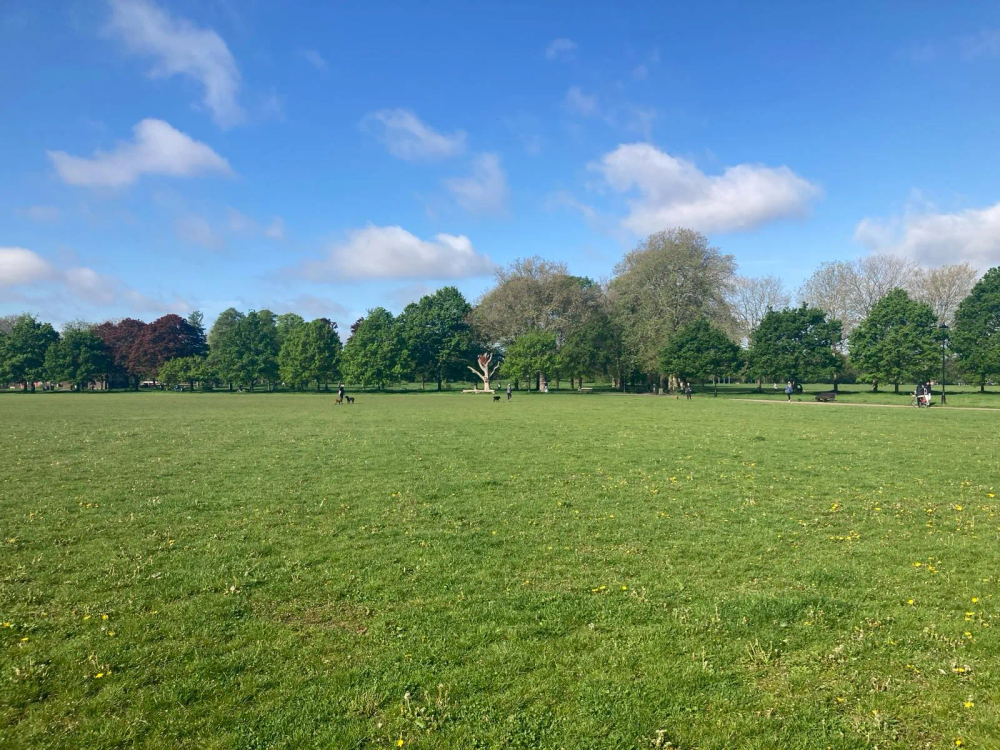
I have no good solutions for winter, except to continue watching the global temperature rise at an alarming rate. If we wait until 2033, London will simply turn into Barcelona.
If you live in a perennially warm place, or a giantic home, congratulations! You don’t have this problem.
3. Finding a common meeting time
As a group, we need to find a time we’re all free. Doing this with more than three people is the algorithmic challenge of the century.
There are some tools that almost solve this. Crab Fit is the top contender, with Doodle coming in a distant second Downgraded for having cumbersome UX and a gross, distracting sprawl of ads on the booking page . They let organisers select some potential dates and time ranges on a calender, then have participants mark which ones they’re free for.
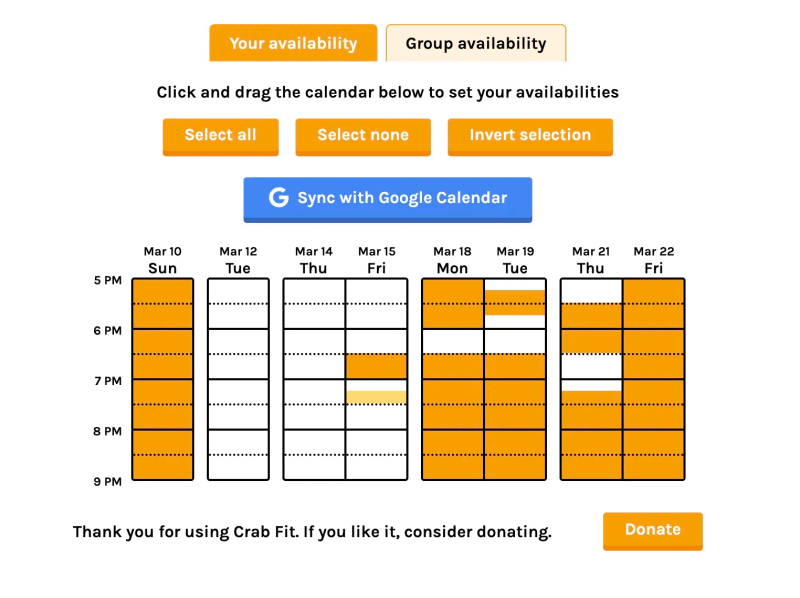
It’s a bit cumbersome as a participant to manually pull up your calendar, check which dates you can make it, and fill these in. But Crab Fit lets you connect your existing calendars and auto-fills in times you’re free – magical! Doodle also lets you connect your calendar, but just shows your existing events on the page rather than filling out slots for you.
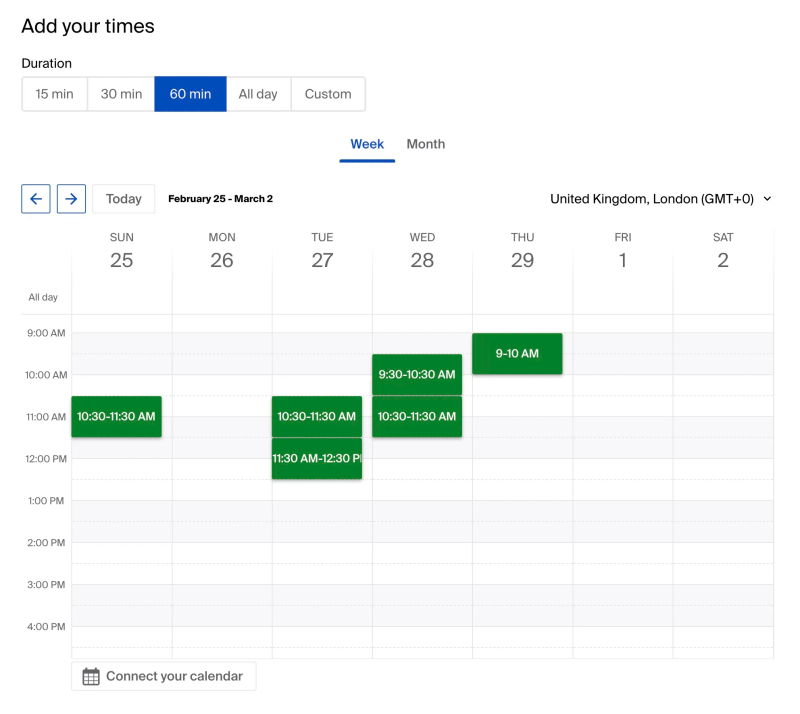
But these systems fail when none of the pre-selected times work out. You then have to add more times, and restart the whole process. If your group meets regularly, say every fortnight or month, then people have to fill one of these out every single time. This turns into a bit of a headache.
In a more ideal world, everyone in the group would connect their calendars to one system, and then it automatically picks a time for you every fortnight or month or whatever your meeting cadence is. No one has to manually fill out anything. The calendars simply stay in sync and announce a new meeting time every so often.
Maybe this does exist, but I haven’t found it. Maybe it’s some paid-for feature in Doodle I haven’t yet uncovered. Either way, please Tweet at me telling me which magical app does this.
Some Words of Encouragement
There are not enough people organising events and running communities. We are deep into the historical moment of Bowling Alone . The article linked here is unnessecarily America-centric, but it’s fair to assume this is a global trend. If you have any small spark within you that wishes to gather people around a shared topic or activity, act on it.
No one else will organise the group you most want to be a part of. Whatever weird, specific things you enjoy – perhaps doing speed sudokus while smoking robusto cigars, or hosting a chemistry analysis session on sourdough bread techniques (I’m not judging either of these) – it’s worth trying to find the others. You are the most qualified person to create environments and experiences that you will personally enjoy, and in doing so you will attract people who like things that you also like. This is a decent way to make friends.
Some people think they need permission to be a community organiser or put on an event. They think they need to be famous on Twitter, or an important figure in their field, or incredibly suave and attractive. This is incorrect.
What you need is a time, a place, an intention, and some people. In fact you only need 2 or 3 of these. If you have people and an intention, you can figure out the time and place later. If you have a time, place, and intention, you can find people by telling your friends and advertising it.
Here are some resources that will teach you more than my piddly little garden note:
